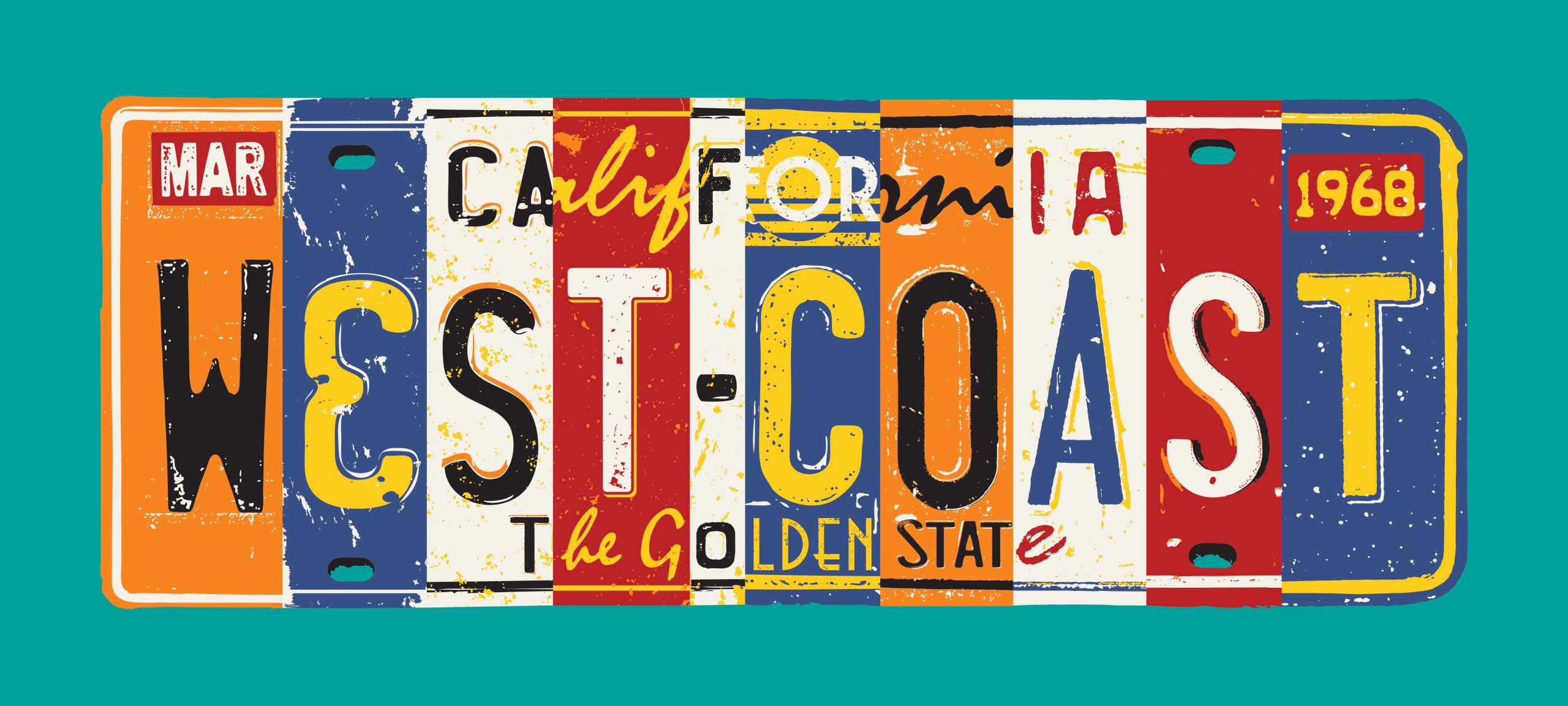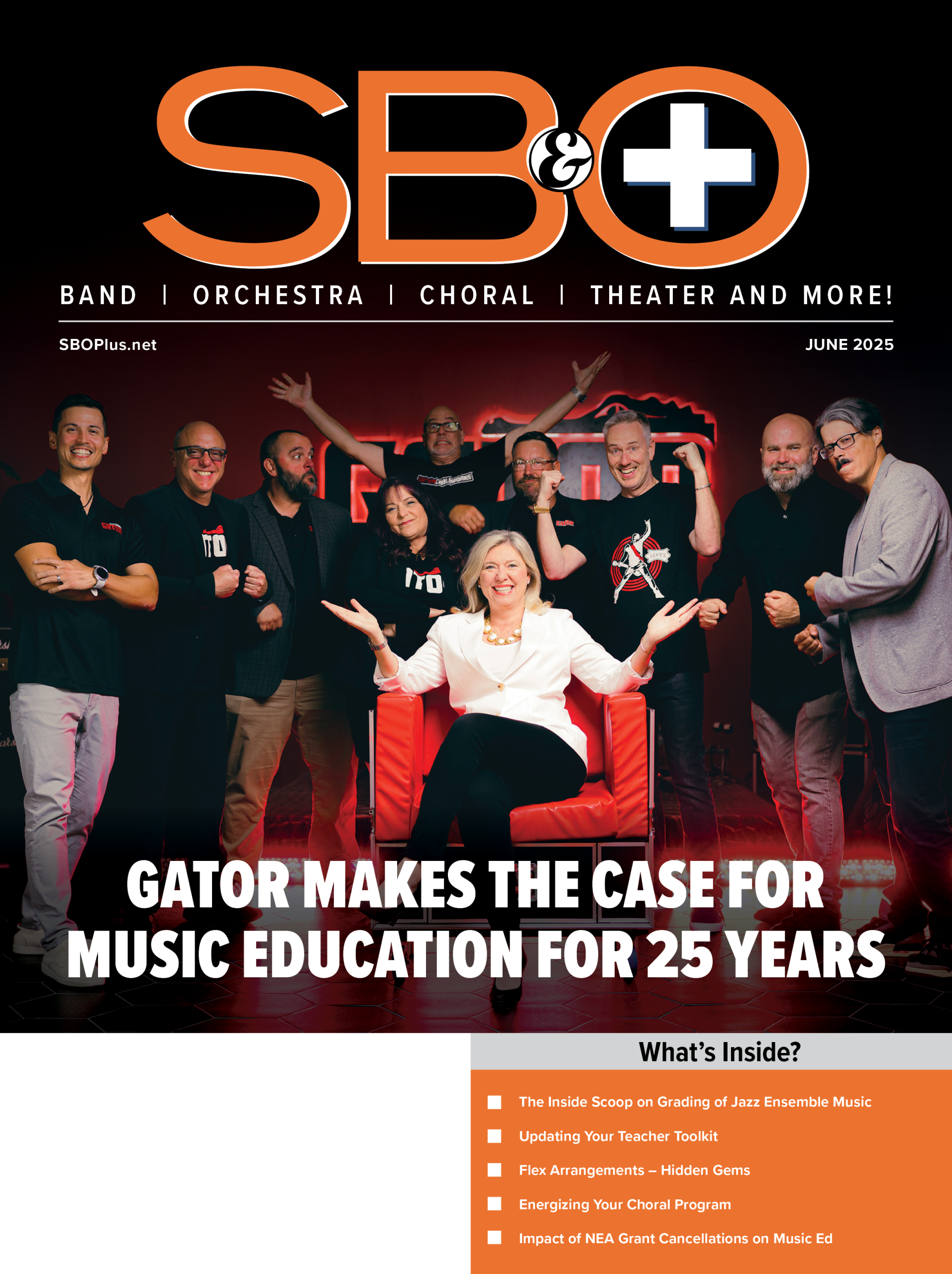My favorite music technology applications are in jazz. Jazz by its very nature is a creative process with many opportunities for improvisation, arranging and composing. Technology opportunities abound in jazz education – and they meet national MENC and local school district music standards.
One of the concerns about jazz education today is that most music educators have not been trained in jazz education techniques, yet are expected to teach it. Consequently, they are hesitant as they experience some limitations in jazz instruction, especially when their ensembles are adjudicated by trained jazz professionals at festivals. But with jazz technology applications, it is possible to accelerate the learning curve toward mastering jazz education principles. Excellent software, interactive CD-ROM, videos, and books are available to expand the jazz education experience.
CREATIVE INTERNET APPLICATIONS
Believe it or not, some of the best instruction can be found for free on the Internet. One is www.changes98.com, a jazz Internet Web-based teaching tool. Students can print out any scale or chord or chord substitution for the solos they’re working on free from this Web site. In both treble and bass clef, you will find 58 spellings of chords and scales in any key, spelling of 48 advanced scales and modes in any key, and 54 common tone chord substitutions for any note in a chromatic scale.
Jazz Scale Suggester System at http://members.w-link.net/~jsss/ is a unique Web page designed to answer basic jazz theory questions. Scales covered include: Major, Natural Minor, Harmonic Minor, Jazz Minor (Melodic Minor Ascending), Dorian, Pentatonic, Blues, Diminished, Whole Tone, Dominant Seventh (Mixolydian).
If you initiate compound searches in your Web browser on the Internet, such as www.yahoo.com or www.altavista.comon either “jazz software” or “jazz history” and “software,” you will come up with some interesting Web sites to explore. For example, under the search of “jazz history” and “software,” I found a jazz history course titled: Jazz History and Appreciation – Part 1 by Bill Yeager, sponsored by San Diego State University. This course, The Jazz History and Appreciation course, is offered as a self-contained course on the Internet with online study materials, an online history of jazz music, examinations, and grades. For many “hot” linked bookmarks, go to:www.kuzmich.com/handouts/bookmarks.aspx for MIDI files, jazz, video streaming, and music education Internet links dealing with music education.
AUTOMATIC ACCOMPANIMENT GENERATION SOFTWARE
Automatic accompaniment generators allow you to bring up an accompaniment in seconds that is “hip” and motivating for the student to practice with. For both classical and jazz applications for voice and band instruments, SmartMusic by Coda Music at www.codamusic.com offers more than 20,000 accompaniments with the capability of saving the student’s performance as a .WAV file. It is possible for a student to record his/her practice session or assignment and then send it to the teacher via an e-mail attachment for comment, or even record it for grandmother at Christmas. You will like working with over a dozen Aebersold and Alfred jazz collections – at any tempo, any key, mute any instruments, and even put any passage in a loop for extra practice. It is now available for educators at www.smartmusic.com. It will be available at music stores this spring.
Band In-A-Box by PG Music at www.pgmusic.com can provide contemporary music accompaniments in dozens of music styles. It is basically a rhythm section consisting of piano, bass and drum parts. But what makes this program so creative is that you make a full sounding arrangement by adding a melody with either a MIDI instrument or recording an acoustical instrument “live” from a microphone. The master recording could then be saved as a .WAV file and posted on the Internet as well. You can harmonize the melody no less than 50 different ways. The software can create improvised solos in almost 250 different music styles/artists providing copyright free improvisation solos for students to emulate. You can also print out compositions in a full score format and with lyrics. Any accompaniment can be transposed instantly with a different tempo making improvisation practice more interesting. I suggest you convert the .WAV to an MP3 file format and you will have a file 10 to 15 times smaller than the original .WAV file for easier Internet posting. To help you master these features, you’ll appreciate the 12 tutorials. Burning CDs is another plus with this program for finished compositions.
Jammer Professional at www.soundtrek.com is another automatic accompaniment generating software program for the Windows platform. It is particularly strong in creating professional arrangements with keyboards, guitars, strings, brass, drums and more. It has a powerful 256-track, multi-port sequencer with more than 200 intros, grooves, breaks, and endings in a variety of styles and an automatic six-part harmony composer, assorted song templates and demos, solid drum beats and original bass lines. It allows more chords per measure than most other accompaniment generator programs. I particularly like its easy step-by-step tutorial to learn the program.
There’s still another quality automatic accompaniment generator software program to consider using, MiBAC Jazz Improvisation by MiBAC Music Software at www.mibac.com. It takes the same approach as Band in-A-Box and Jammer Professional. The chords are “hot” and I particularly like the ballad styles. The jazz styles are clean and realistic-sounding. Within each of the four main styles, there are three tempo-related sub-styles, so you have a total of 12 styles to choose from. Styles include ballad, swing, and bebop in 4/4 and 3/4; rock shuffle; bossa nova; samba; 12/8 blues; and two-beat feel. You can mix the styles of each instrument anywhere in the song. MiBAC Jazz has just been released for Windows, and the new USB-compatible Mac version supports OMS, FreeMidi, and QuickTime.
If you want an automatic accompaniment generator that borders on artificial intelligence, check out CAMP, version 4.2., published by Microworks atwww.mxw.com. It has an auto notation feature more advanced than most sequencers with thousands of linear and harmonic try-outs for composing and film scoring. It also has an auto harmonize feature that is a delight for arrangers. For students, CAMPS 4 has a teaching tool to demonstrate how melody/chord relationships work. It really does compose music from scratch and from any starting point in an existing composition in creating both melodic musical lines and chord structures.
TRANSCRIBING SOFTWARE
Transcribing is very important in jazz education because students gain an intuitive understanding of the rules of jazz improvisation by transcribing and analyzing jazz solos of great performers when they slow down a solo and listen to it or write it out, then play it. Transcribing is much easier now with powerful transcribing software. Change the tempo without changing the pitch. Filtering allows the solo to stand out for more audible identification. Looping lets you easily listen to a small section as much as you like.
Transkriber by Reed-Kotler at www.reedkotler.com has all the whistles and bells you will ever need to transcribe the slower playback in “studio quality.” Many top name players, transcribers and producers use this software. It is available for both Windows and Macintosh. You can play back any note to check against the note(s) in question during the transcribing process. Its filtering capabilities are among the best in the industry with a vocal/line eliminator. I particularly like the CD ripper that is built into the Windows version. For those of you who do a lot of transcribing, Reed-Kotler also offers several small hardware models that can operate on a portable battery-operated CD player with headphones to remotely transcribe anyplace. One even specializes in transcribing bass lines.
Transcribe! at www.seventhstring.demon.co.uk is a product from England offering a lot of transcribing features. It reads, plays and records audio files without modifying them. I like that it is distributed as shareware for 30 days so you can try it first before purchasing it. There is a tutorial on how to transcribe for beginners. It is available for Windows, Mac and native OS-X versions.
SlowGold (www.worldwidewoodshed.com) is a slick transcribing product that slows down sounds without changing the pitch or the high sound quality. I like the pitch-shifting feature that allows you to tune the songs you’re working on to any key or to simply tune the recordings to concert pitch if they were recorded a bit flat or sharp. It is a Windows program only. It even works with MP3 files and can record from any source: cassette, phono, mixer, etc. Another feature is that it links automatically to notation and sequencer programs.
IMPROVISATION
For play-along instruction, check out MIDI Jazz Improvisation by Tom Rudolph and Roger Morgan, published by Electronic Courseware Systems atwww.ecsmedia.com. This two-volume series allows the flexibility of changing keys, tempo, and track selection. Volume I exercises introduce II-V-I progressions, slow blues in Bb, medium blues in F, fast blues in C, minor blues and a sample tune. Volume II exercises introduce more advanced concepts, including samba, ballads with II-V progressions, 12-bar Blues with substitutions, Blues with a bridge, funk/rock improvisation and complex II-V-I progressions.
Breakthrough To Improv: The Secrets of Improvisation by Dave Frank published by Hal Leonard is the first DVD improvisational instruction material published. For more information, please see a review of this material in the DVD section below.
EAR TRAINING AND MUSIC THEORY
Auralia by Rising Software (www.risingsoftware.com) is a versatile and powerful learning program that is part teacher-directed and part compute-aided. It provides a curriculum framework promoting a competency-based training approach that helps fill the need for a structured music resource for schools and tertiary institutions. Its 26 topics are very comprehensive. They are divided into four areas of practice: intervals and scales, pitch and melody, rhythm, and chords. Jazz instruction is covered extensively in these four areas of instructional practice, including a section called Jazz Chords, which covers aural recognition of all basic chord types with extensions and altered extensions and Jazz Chords Progressions, which covers everything from 2-5-1 progressions to Coltrane changes. There is extensive testing that can be customized for your students as well as a tutorial “professor” who guides you.
Another product by Rising Software is a written theory product called Musition. Musition 2 is a drill-based instructional product making the learning of the fundamentals of music fun and easy for beginning to advanced levels. For jazz instruction, the following features are invaluable: Chord Symbols – visual identification of chord symbols; Chord Scale Relations – identifying appropriate scale choices when improvising over chord types; Jazz Scales – visual identification and writing of scales, including modes of the melodic minor, bebop scales, and symmetrical scales; and Scale Home Keys – understanding modes and how they relate to a parent “home” key.
Alfred Publishing’s Essentials of Music Theory (www.alfred.com) series offers extensive instruction in three volumes. Volumes 2 and 3 help develop the chops to play jazz with dominant 7th chord inversions (V7 first introduced in Volume 2), basic major chord progressions (nothing specific on jazz), minor chord progressions, modes, harmonizing a melody, composing a melody, 12-Bar Blues chord progression, Blues scale, and basic two and three-part and rondo form.
MiBAC Music Lessons I, Fundamentals, and Music Lessons II, Chords and Harmony are very helpful drill and practice software packages for jazz. Topics covered in Music Lessons I are note names, circle of fifths, key signatures, major/minor scales, modes, jazz scales, scale degrees, intervals, note/rest durations, intervals ear training and scales ear training. Music Lessons II is the most comprehensive software program for teaching and learning chords and harmony. It teaches visual recognition, written music notation, playing skills (piano and guitar), and ear training.
JAZZ HISTORY AND INSTRUCTION: CD-ROMs AND VIDEOS
Of all the music technologies, videos are shining more light on jazz, especially guitar and drum-set techniques. Jazz history videos illustrate a very important topic for jazz ensembles, unfortunately, music history is rarely addressed in jazz ensemble classes. The Clearvue/eav (www.clearvue.com) History of Jazz is an outstanding single introduction video to the history of jazz, emceed by the legendary Billy Taylor. This video series traces the history of jazz from its roots in slave songs to present-day innovations. It presents a good historical survey, focuses on several jazz styles and introduces students to famous musicians illustrating their artistry. The teacher’s guide includes suggested viewing segments, identification of the music used, recommended recordings, a glossary of music terms, and words to review that expand your approach to the jazz experience.
The Ken Burns Jazz series published by PBS Home Video and the audio CDs by Columbia is distributed by Clearvue/eav. The series consists of ten 120-minute videos and eleven CDs. Documented here are the most popular and influential jazz artists and their music.
Clearvue’s The History of Jazz CD-ROM is both educational and entertaining. Rare photos and many musical examples take you deep into the history of jazz. The sights and sounds of jazz music legends include Louis Armstrong, Dizzy Gillespie, Scott Joplin, Duke Ellington, Benny Goodman and others. This CD-ROM will be a positive factor in your students’ interest and understanding of the jazz experience.
Two huge catalogs of jazz videos are offered by DCI Videos from Warner Bros. and View Video. There are no less than 100 videos in the two catalogs, many of which have also been converted to DVD. The full range of titles can be found on the V.I.E.W. Video Web site at www.view.com.
Carl Fischer (www.carlfischer.com) has recently come out with three well designed drumset videos by Dave Weckl titled, “How to Practice,” “How to Develop Your Sound,” and “How to Develop Technique,” as part of its A Natural Evolution series. The step-by-step is brought to life with exciting live recordings of the Dave Weckl Band and a special acoustic group put together for this video.
NEW WAVE OF INSTRUCTION: DVD
View Video is a leader in presenting jazz history materials in DVD format. The variety of special DVD features include: Dolby digital stereo audio, digitally mastered audio and video, multi-directional interactive menus, as many as 50 scene selections and instant chapter access to songs, instant access to instrumental solos, additional audio selections, additional video footage, multiple Artist biography, a 10-question jazz IQ test, and Jazz Trivia & Fun Facts Track. These features create a perfect audio-visual aid, and with the instant access feature you do not have to fast-forward and hope you hit the right spot.
Hal Leonard (www.halleonard.com) has come out with the first DVD improvisation material, titled “Breakthrough To Improv: The Secrets of Improvisation,” by Dave Frank. If you’re looking for guidelines on where to begin improvisation instruction and how to practice, this is a good place to start. It offers guidelines on how to develop a solo, how to creatively connect phrases and add triplets and double-time lines to your solos. In all, it offers 15 steps to creating better solos.
Warner Bros. Publications is the first publisher to include a DVD in an instrumental jazz education pedagogy book titled, “Jazz Pedagogy: The Jazz Educator’s Handbook and Resource Guide,” by J. Richard Dunscomb and Dr. Willie L. Hill, Jr. It gives structure to planning and implementing a successful jazz program. DVD contents include middle school, high school and college jazz ensemble rehearsal techniques, how to teach improvisation, rhythm section techniques and audio examples of swing, mambo, salsa, meringue, samba and Afro-Cuban styles. Also included in the book is a resource guide with thousands of listings for jazz reference materials, jazz arranging/theory, individual instruments, software and instructional videos/DVDs.
JAZZ SEQUENCING: HARDWARE AND SOFTWARE TECHNOLOGY
Possibly the best tool for jazz educators ever made is the little QY100 box by Yamaha (www.yamaha.com). About the size of a videocassette tape, the QY100 has a tremendous amount to offer a student learning jazz. With its built-in sequencer, students can easily carry it around and have the backup MIDI tracks to any song they are working on. With its Smart Media Cards, the QY100 can easily transfer files to and from a computer so the song library is virtually unlimited. In addition, with its chord sequencer and huge amount of preset style patterns, a teacher or student could program chord changes for improvisation practice.
Sequencing software programs, such as Sonar and Home Student by Calkwalk (www.cakewalk.com) can quantize swing rhythms with a percentage setting, odd time signature, multiple meters key signatures per track, standard notation, tap tempo entries, and tempo maps.
INTERACTIVE CD-ROMs
One publisher has set the standard for the use of interactive CD-ROMs in the area of jazz education and that is AC Muzik (www.acmuzik.com). Presently, the company has six interactive CD-ROMs that can make a world of a difference in providing jazz instruction with or without a teacher. Simply click the mouse and immediate interactive jazz education instruction awaits you. The following products are available: Compositions and Arrangements, The Developing Drummer, The Developing Jazz Guitarist, Jazz Fundamentals, Interactive Arranging, and Developing the Instrumental Jazz Ensemble. The Jazz Fundamentals CD-ROM is particularly good, with more than 2,000 different screens of instruction, which is a lot of branching instruction for an interactive CD-ROM.
JAZZ INSTRUMENT INSTRUCTION
There is quite a bit of software available that addresses jazz techniques for band instruments, especially for rhythm section instruments. When you go to www.sboplus.net/sbomag/jan01/technology.aspx, check the reviews of the instrumental products published by some of the following publishers: PG Music (www.pgmusic.com), Charanga (www.charanga.com/support) PlayPro (www.playpro.com), eMedia (www.emedia.com), Alfred Publishing (www.alfred.com) JSSMusic (www.jssmusic.com) and AC Muzik (www.acmuzik.com).























